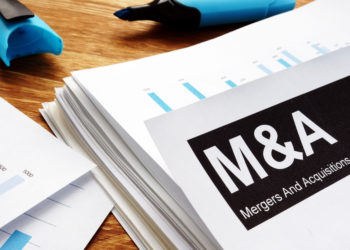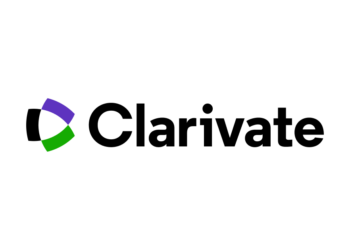Editor’s Note: Today’s post is by Isaac Wink. Isaac is a Research Data Librarian at the University of Kentucky. The views contained in this post represent his personal views, not the views of his employer.
Clarivate, the provider behind a number of resources key to academic libraries, including ProQuest, recently announced that it is shifting to a “subscription-based access strategy,” meaning that it will no longer allow academic libraries to purchase perpetual licenses to content. This is bad news for libraries. Leo Lo, the president of the Association of College and Research Libraries, told Publishers Weekly that “Clarivate’s move away from any ownership option forces libraries into a cycle of ongoing payments, intensifying concerns about collection stability and the ability to preserve scholarly materials for future use.”
Coincidentally, this news from Clarivate came just a week before Amazon ended users’ ability to download their Kindle purchases to a computer. While it feels to many consumers like buying an e-book means they have purchased a file that they can use as they please, in reality they have bought the right to access the book through approved methods. Amazon’s removal of the ability to download books is signaling that it is cracking down on the former interpretation of digital ownership. It is noteworthy that within the span of a few days, two companies with different customer bases have made moves that similarly restrict how those customers will be able to purchase and access the content they sell.

Subscription models have become increasingly common for consumer software—just think of the transition from purchasing music in physical formats to downloading MP3 files from iTunes to the current hegemony of subscription-based platforms like Apple Music and Spotify. These transitions do not always go smoothly. In 2021, the notetaking app Notability, following the lead of competitors like Evernote and Goodnotes, announced that it would be switching to a yearly subscription plan for full access to the app’s features, and that even those who had purchased it previously for a one-time cost would have to pay. The decision sparked significant backlash from users who would now have a less capable app despite having made a purchase up front. The company quickly reversed course and announced that those who had already purchased the app would continue to have full access—but future users would only have the option to purchase the subscription plan.
Even in music, where the switch to subscriptions felt less turbulent to many users, the new paradigm has transformed the music industry, with artists making significantly less for streams of their songs than they would on royalties for physical or digital sales of their music. Beyond direct impacts to consumers, subscription models inevitably transform the ecosystem in which they operate, as chronicled by Liz Pelly in her new book Mood Machine: The Rise of Spotify and the Costs of the Perfect Playlist. Clarivate’s recent announcement is no different in the realm of scholarly publishing. As Andrew Pace of the Association of Research Libraries told Publishers Weekly, “Libraries will need to decide whether this new business model is consistent with being good stewards of the resources with which they have been entrusted.”
The trouble with subscription models for purchasers is that they work fine until suddenly they don’t. Netflix, HBO, and other movie and TV streaming services are notoriously mercurial when it comes to adding or removing content beloved by fans, even when no licensing rights have changed hands. In the academic context, instructors are left in the lurch when a treasured source for teaching is unexpectedly dropped from a collection to which the library subscribes.
The solution to both these problems is the same: Individuals and institutions should have the option to buy physical copies or perpetual access to digital editions for content they can’t afford to lose. Direct purchases not only provide security of continued access but also generally provide better financial support to creators. But corporate pivots to subscription-only models take that option away. In the short term, consumers are dependent on the whims of platforms to maintain access to the resources they need. In the long term, subscription models may change an industry in such a way that new iterations of those resources can never even see the light of day.
While Clarivate’s decision in many ways mirrors transitions to subscriptions for consumer content, libraries will also need to reckon with how increased reliance on subscriptions would change the nature of their collections. To what extent do librarians have the ability to drive acquisitions in strategic directions when their collections are no longer composed primarily of resources to which they can guarantee perpetual access, but instead merely a bundle of subscriptions? Subscription access is not new and will always be a part of how many libraries deliver resources to patrons in the digital age, but if more vendors choose to make it their only business model, libraries may be left in an uncomfortable position.
Another reason the Clarivate announcement is different is that the company will be up against significantly more organized resistance from libraries. Thus far, the announcement has not gone over well with library organizations or with individual librarians. EBSCO, seeing an opportunity, put out its own statement on its “Commitment to Supporting Libraries’ Book Acquisition Needs Amidst Industry Shifts,” specifically naming perpetual access to e-books as a continued offering. The question now is whether such pressure will be sufficient to cause Clarivate to reevaluate. If it does not, libraries will need to make difficult choices about how to respond and if they will reward Clarivate for limiting their purchasing options.
Discussion
17 Thoughts on "Guest Post – The Future Is Not Perpetual (But it could be yours for just several thousand dollars per year…)"
I wonder how this fits into a broader strategy. For example, will the more traditional ProQuest databases (e.g., Research Library and Global Newsstream) be abandoned in favor of the ProQuest One platform (PQ1Academic, Business, Education, Literature…)? How long will Clarivate support the overlapping content repositories? How much consultation be afforded the library community before decisions on these changes are announced?
Clarivate has explained that this impacts ALL one-time-purchase products, like the primary historical databases, not just ebooks. The kind of databases you are talking about have always been annual subscription products, so there is no change to them at all, at least according to what they’ve told us so far. If they do make changes to those, that will be unrelated to this news. Any platform can make those kinds of changes; that’s just standard business practice across the industry. Usually vendors have some kind of advisory team of librarians that they work with during the development. I am actually on two of those myself right now (not related to Proquest).
It is worth noting that libraries can transfer their perpetual rights from one platform to another (assuming the ebook is on the second platform). So for instance, I am working now with GOBI (book/ebook ordering platform owned by EBSCO) staff to arrange to transfer books we have perpetual rights to on Proquest over to EBSCO’s ebook platform. This is apparently free to do. While Clarivate has assured us that perpetual rights will be honored in, well, perpetuity, the way they have handled this whole thing leaves us not trusting them to understand that perpetuity really means forever. Their entire original justification for the change makes it clear that they do not understand the importance of long term collection building to academic libraries. Their recent followup letter further makes that clear.
How does Ebsco allow you to transfer perpetual rights on one platform to another for free? Is that licensed? Are publishers consulted? Are publishers compensated by Ebsco?
I don’t know exactly, but our Gobi rep said we could, and that it’s free for us, and is starting to work out the details so it is a “Thing”. I would expect that the publisher who got our money the first time doesn’t care if our “1U” is on a particular platform or moved to another, with emphasis on “move” not copied, so we’re not going to end up with 2 1Us on two different platforms. I’ll probably learn more as we get further into the process.
Agreed—moving, not copying, can only benefit the library, publisher, and aggregator in situations like this. Thanks for the clarification.
I got this followup info from Gobi (who are apparently not allowed to comment directly on sites like this):
“The reason we are allowed to transfer titles to the EBSCO platform is that most publishers have it written into their contracts that perpetually purchased e-books can be switched at the same or closest to access model from one platform to another at no cost. This only applies to aggregator platforms, such as ProQuest and EBSCO.”
Ensuring digital collections remain available for future generations requires more than just a license—it requires a commitment to long-term digital preservation.
When investing in digital resources, make sure lasting access is part of the plan by insisting on preservation with a trusted third-party archive like CLOCKSS. As a community-governed, not-for-profit digital archive, CLOCKSS ensures that scholarly and cultural records remain secure, accessible, and preserved for the future.
Together, we can safeguard digital collections, engage publishers, and uphold the library’s mission of perpetual access to information.
Hello – the author here says: “[Clarivate] will no longer allow academic libraries to purchase perpetual licenses to content.” I wanted to clarify that while we are making changes to purchasing title-by-title on OASIS for Ebook Central, we are committed to increased investment in Rialto as an ebook marketplace, enabling title-by-title ebook purchasing from publishers and other vendors.
Best wishes,
Amy
Many libraries don’t operate at the scale needed to justify purchasing from various different vendors and publishers, whether through OASIS/Rialto or otherwise. Ebook Central was useful because libraries could purchase title-by-title from ProQuest directly, rather than from various different companies. When Clarivate cuts this core service, that doesn’t leave any real reason for some of us to keep using ProQuest’s acquisition tools, and I suspect EBSCO will capture a larger market share.
First, given everything else they’ve said including in that latest email, I interpret that “title by title” sentence to mean using Rialto to purchase ebooks perpetually on OTHER platforms, “from publishers and other vendors”. So when this all happens, you can use Rialto to perpetually purchase ebooks on JSTOR, EBSCO, Wiley, etc., just not EbookCentral.
And note that only Alma libraries can use Rialto at all. They don’t have plans to change that. I specifically asked that in one of their webinars.
Agreed, Amy, and to put a finer point on it, libraries can now secure perpetual access through the twenty platforms connected with Rialto, which is advantageous for publishers like mine, De Gruyter Brill. However, university presses and independent publishers without a proprietary platform, relying heavily on direct sales through Clarivate’s eBook Central platform, are disadvantaged. These small publishers must now depend on smaller aggregators to recover this perpetual business, albeit at reduced margins, as they must compensate both Rialto and the aggregator before receiving their royalties. There are assumptions that these publishers will recoup this revenue through smaller aggregators. However, considering the loss of business and reduced margins for the perpetual business that moves to other channels, many small humanities and social science publishers will feel the impact of Clarivate’s decision.
I wouldn’t call EBSCO a “smaller aggregator” and while JSTOR is indeed smaller, they specialize in hosting ebooks for university presses. As a librarian, I admit to not knowing anything about the financial arrangements between the publisher and the purchase platform (eg Gobi, Rialto) and the hosting platform (eg EBSCO, EBC, JSTOR). I would like to learn more about that if anyone reading this does have info they can share. I do see as the purchaser the patterns of ebook pricing among the aggregators and “pub-direct” platforms by license type. For instance, usually the price for a UU on T&F’s own platform is the same as just a 1U on EBCO/EBC. But Springer tends to charge more for the UU on their platform than the 1U on the aggregators.
Thanks, Melissa. My analysis of revenue streams from aggregators for small publishers (covering over 40 publishers) underscores my point about the comparative size in terms of annual revenue contribution. Despite this, services like GOBI, which supports 37+ platforms, are critical to the publisher/library relationship beyond mere revenue figures.
For publishers like mine, De Gruyter Brill, aggregators are essential for reaching markets our commercial teams cannot. Although meaningful, the revenue from our aggregators is proportionally much smaller than direct-to-library sales – this should be the case for all publishers with similar setups. Therefore, news from Clarivate has less impact on us than the many university presses we distribute that lack a platform and sales team.
If you are conducting research in this area, I highly recommend it due to its complexity and underreporting. I suggest focusing on the dynamics between libraries and university presses and the dependency on aggregators/intermediaries for digital distribution, financial sustainability, and global impact.
As someone working as an aggregator, too, I believe the competition among aggregators is less about the publishers they distribute and more about the number of libraries they serve—the more libraries that spend on content hosted at the aggregator’s platform, the more successful an aggregation business. My discussions with Clarivate’s former VP last year about aggregators providing synchronous eBook usage to publishers quickly turned to them talking about “the race to the bottom” in aggregation.
It’s a race for library participation, with the bottom being the competition among aggregators to offer more content at lower costs with “library-friendly” business models. Clarivate’s apology letter highlighted this by omitting any apology to publishers in their letter and launching a 700k eBook subscription model or as they market it as “the world’s largest eBook scholarly ebook subscription.”
It’s concerning that, in my opinion, the power dynamic between aggregators and publishers heavily favors the aggregators – most of whom have never published a book. Bridging the communication gap between libraries and small publishers through the appropriate forums can empower small publishers more rapidly and provide financial security over distributing their intellectual property to libraries.
If you do the research, I hope you write about it!
‘the new paradigm has transformed the music industry, with artists making significantly less for streams of their songs than they would on royalties for physical or digital sales of their music’
Not really true: it depends how many times the physical version is listened to. The Spotify royalty is per play and therefore not comparable to a single purchase. If you only listen to a CD once then the per play rate is miles higher than Spotify; but if you listen to it a few hundred times then the Spotify per play rate is the more generous one.
Subscription works well for music; not so much for books or software. Another key point about Spotify et al. is that you always have the choice to still buy the physical/perpetual product. Subscription becomes a problem when that choice is removed (thanks Adobe).
Actually, that’s not accurate. A track must have accumulated 1,000 listens of over 30 seconds each to generate any royalties at all on Spotify. So the Spotify royalty is per play after the song has surpassed that threshold, and for many artists, that means Spotify royalties are $0.
Also worth noting that “[Spotify] doesn’t pay a flat rate per stream, rather, paying rights holders based on ‘streamshare,’ a figure calculated from the number of streams of a rights holder divided by the total number of streams in a particular market.” https://www.orpheusreview.com/features/fair-compensation-for-artists-spotify-and-bandcamp
As that same article notes, “Just to compare the astronomical difference between purchasing an album on Bandcamp and streaming it, let’s do a little bit of math. Assume that you want to listen to a 30 minute album that has ten songs. Let’s also assume that Spotify will pay the artist of said song a generous $0.003 each time you stream the song. To generate the (generously estimated) streaming revenue equivalent to buying that album for $5 on Bandcamp, you would need to listen to that album 167 times.” Though that’s assuming the album had already been listened to more than 1,000 times (“In practice, rarely, if ever, has around 1,000 streams turned into $5 on Spotify”).
From Pitchfork: ““We might make $100 a year from streaming. On a recent statement of mine, the royalties for one track that had 580 plays on Spotify was zero dollars and 20 cents.” (https://pitchfork.com/thepitch/how-much-more-money-artists-earn-from-bandcamp-compared-to-spotify-apple-music-youtube/)
Also of note, Fast Company reports that Bandcamp is profitable, while Spotify continues to lose money most quarters https://www.fastcompany.com/90951664/bandcamp-spotify-vinyl-renaissance
Provide 100% of content in 100% of the purchase, access, and use models libraries deploy. By doing so a provider can access 100% of the libraries budget, mindshare, and collection development philosophy. I have advocated for and directly pursued this strategy in every organization I have worked in, from very, very small start-up, to small to medium sized enterprise (SME), to very large and publically traded company. I believe this content delivery strategy/business model can be effectively pursued while prioritizing one model above all else, e.g. subscription.



